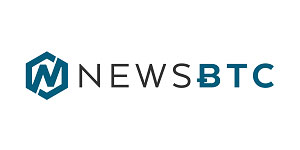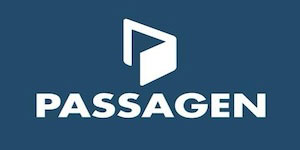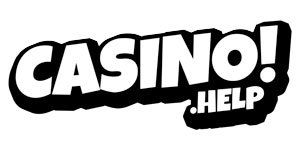Comics Interview: Dissected – Issue #1
Welcome to this brand-new feature here on Nerdly, where one of our comic gurus, Ian Wells, delves into comics history and dissects Comics Interview, the long-running journal of interviews and criticism from David Anthony Kraft.

Credits
I am going to kick things off by delving into the credits box, just to do a quick round-up of who’s, who. Now this feature may not come back every week depending on how much the credits change issue to issue. If a new name crops up I will call them out and maybe with the people I can’t find anything about online I can find out about them with the reading of each issue. There is no better place to start than with the main man himself, David Anthony Kraft. Before publishing this very magazine we are about to dive into Kraft has a more than substantial body of work both editing and writing comics for the Big Two. Perhaps he is best known for his run writing The Defenders and as the editor of FOOM. In 1974 he founded Fictioneer Books, an imprint of Fictioneer was Comics Interview Group which published such comics as Southern Knights and CyCops. Ads for both of these feature heavily within the pages of Comics Interview. Sadly we lost David to Covid in 2021 but his legacy and fan base live on. Jim Salicrup acted as an editor and design consultant to Kraft, bringing 20 years worth of editing experience at Marvel. His first job was to be a bike messenger running original art pages to the offices of the Comics Code. Acting as distribution consultant is long time writer Mike Friedrich, best known for long runs on Batman, Detective and Iron Man. Next up filling the role of art director or in Kraft’s words providing ‘glitzy graphics’ is Ron Fontes. He had worked as an artist for Marvel and Whitman before having a long career creating over 500 children’s books. Jim Novak who is interviewed on the first issue provided Kraft with the Comics’ Interview logo so we will touch more on him later. The following were all credited as ‘advice & input’ Eliot Brown, a creator who has worn all the hats at both Marvel. Fun fact being he took the photograph for the cover to Marvel Team-up #128, which features Joe Jusko cosplaying as Captain America. Richard Bryant, another artist with a solid body of work across the Big Two as well as a plethora of indy titles. Ed Hannigan a writer/artist for both Marvel and DC, notable work includes co-creating Cloak and Dagger and Grell’s Green Arrow run. Carol Kalish who worked as a comics retailer before joining Marvel in 1982 where she was dubbed ‘Mistress of Propaganda.’ Discovering Alex Ross is not a bad thing to have on your CV. Jan Mullaney who with his brother Dean founded Eclipse comics, who have a heavy ad presence in this issue. Lastly, there is Roger Slifer who like Novak is interviewed in this issue. Rounding out the well-known names in the credits we have ‘west coast correspondents’ Mark Evanier and Scott Shaw. Anyone who knows the work of Jack Kirby by association knows the name of Evanier. Of course he was talented writer of comics and animation in his own right. Shaw was huge creator in the early days of underground comics, as well as working for Hanna Barbara. Recently I started listening to the origin of San Diego Comic Con podcast in which he features as one of the co-founders.
Up Front With DAK
This is Kraft’s open editorial to kick off this issue, here it takes the shape of Kraft being interviewed by Hannigan to get his take on why he decided to do this magazine. Kraft says the idea has been sitting with him since his days working on FOOM. Then he admits it was Salicrup who suggested it should be all interviews. Kraft liked the idea, as interviews are more honest and he would present them in the magazine unedited so it has a conversational feel. Personally, when I was looking for back issues of Comics Interview of eBay it was because I wanted behind-the-scenes conversation and inside knowledge of comics work and the industry. On the right hand side of this editorial is the contents page and what leaps out right away is how it resembles a comics credits page. This is because Kraft wanted to cater to all levels of comics. He says he originally planned for 18 ‘regular/semi-regular features. It’ll be interesting to follow this plan as I dive into each issue. From his point of view why he wanted to make Comics Interview different was because the Comics Journal was too critical and Amazing Heroes was too character-focused. He ends the piece by saying “Comics Interview is the voice of comics.” And if that is his manifesto I can already tell I am going to have a good time going issue to issue.
The Omega Men
Roger Slifer and Keith Giffen talk about their upcoming collaboration on DC’s Omega Men. This first volume would run for 38 issues, it has never been a series on my radar. I do know a few creators working today hold it in high regard, Tom King among them. Slifer was not a name known to me before this, despite having heard of Omega Men. He worked co-plotting with Kraft on The Defenders, co-created Lobo as well as having a long career writing in animation, which is a theme in this issue. Giffen I had heard of, the other co-creator of Lobo as well as his long popular run on Justice League International. Also if you follow the work of Michele Fiffe or even just follow him on social media then you have absorbed Giffen’s work by osmosis. Giffen kicks things off by saying he has a habit of having to redesign a character’s look if he is to be working on a project for a prolonged period of time. We get an insight into his comic origin story, like how Atlas would look at his work before telling him they were going out of business at the end of the week! When he submitted work to Marvel he didn’t include any contact info, which is a huge lesson all aspiring creators can learn from. Especially in this social media age. While working at Marvel he was told to draw like Kirby but his fellow creators told him he should draw like Giffen! I feel this is something that still hinders Big Two comics. Obviously not drawing the same as one guy but having a rigid structure to comics. Something that is magnified even more with characters appearing across multiple formats and having to be recognisable as the same character. Interestingly Giffen states even in 1983 he wouldn’t want to work on a licensed character because of the ‘bullshit’ that comes with it. On a similar level Slifer recites a bad editing experience on an Avengers annual that made him fall out of writing, it ‘took the soul out the story.’ Omega Men had great appeal to return to writing for him because it was a chance to work with Marv Wolfman, on higher quality format series which was also free of the Comics Code. Reading the interview you get a real sense that they are more like co-plotters rather than a writer/artist duo. They are both looking forward to producing a story without the binds of the Comics Code as they want the violence to be realistic. There are some creative notes to take away from the interview. Interestingly they admit to having a year of the story planned out but they don’t have the issue to issue set in stone, leaving themselves wriggle room. Giffen says it is easier to do breakdowns on a solo character rather than a team book. Citing Omega Men as a more traditional ‘graphic approach’ as opposed to his Dr. Fate work which he calls ‘impressionistic.’ What stands out in this interview is the dynamic between the three creators, you can tell they have worked well as a unit beforehand. Also, I really enjoyed the passion with which Slifer and Giffen talked about the upcoming project, it is more than just work for hire for them both. It is an opportunity to tell a story they want to tell and how they want to tell it.
Gabbing With Gerber
This interview interestingly runs longer than the cover feature. I was really looking forward to unpacking what Gerber had to say. At the time of the interview he had been out of comics for a long time. His last Marvel work was Omega the Unknown. I was expecting him the be throwing shade at people and taking no prisoners. There is a lot of animation talk to wade through and for me in a magazine called Comics Interview this is a turn-off. I imagine Kraft has a huge Rolodex of contacts after years working in and around the industry so I can’t blame him for reaching to to who he does, when he does. Perhaps the biggest take away from it is the fact he is working in animation despite admitting having no love or previous connection to it. Is this how disenfranchised he has become with comics after everything that happened with Howard The Duck? But he then says currently comics offer more creative freedom than TV or film, is this a yearning for his true love? He says current comics feel like reprints from the 60s and that comic fans are fickle. He says he and his peers were top of the pile one day and garbage the next. He sights Claremont and Miller as the top talent now who will soon feel the fickle nature of fans. Well some things never change really and again this is something that has a spotlight shone on it even more with social media.
Ink Slinging
Terry Austin has just finished a long run on Uncanny X-Men, whilst currently working on Miller’s Daredevil and soon to start on The Further Adventures of Indiana Jones comic. This was a much shorter interview and didn’t feature a lot of shop talk. A lot of the discussion is on his departure from X-Men and how he has X-Men burnout. Despite Kraft saying he was such a big part of the fabric of X-Men, Austin says now Paul Smith is on the series it would be better to have a fresh approach. However, there are two gems of behind-the-scenes knowledge dropped in the interview. Firstly Austin says he has just brought Kevin Nowlan into the fold at Marvel and will be inking over his pencils on an issue of Doctor Strange. Nowlan would go on to be a major artist and inker in the industry for years to come and for those keeping count it is Doctor Strange #57 (vol. 2). Austin goes on to say DC have offered him a project inking Alex Toth, which of course he says he is going to take, who says no to Toth? I believe this project is Superman Annual #9.
Diamond Jim Novak on Lettering
The first comic that springs to mind from Jim Novak is the Weapon X story from Marvel Comics Presents. Despite being a letterer he brings up a few good points covering comics as a whole. The interview is accompanied by a breakdown of the evolution of his designs for the Comics Interview logo. Immediately what jumps out is the fact that he created the Star Wars logo! The standard rate for a logo design at the time was $25. I think it is good that he is able to laugh it off. Of course, Star Wars has never gone away and is possibly bigger than ever now and his logo is still front and centre. His skill for lettering is self-taught and he was also an aspiring artist in his younger days. He worked as a sign painter before working in the DC production department where he could hone his skill. Novak says working in comics has for him taken the awe out of comics to some degree. He feels there is no diversity in the direction comics are moving, with alternate publishers feeling like Marvel/DC ‘rehash.’ This echoes Gerber’s sentiment earlier. He left me with something to think about every time I read a comic now. He says bad lettering is like a movie having a bad soundtrack.
Ad Space
Oh man, the ads in this thing really make me jealous of what era of comics I grew up in. Firstly it highlights how much more fun it was to collect comics in a pre-internet age. It’s like with every turn of the page you could be introduced to a comic that wasn’t previously on your radar. I can relate to this slightly despite being in the 21st Century when I started collecting comics, my house didn’t have internet. When I picked up my first ever Wizard magazine I got so many pages in and there was an advert for Origin, this was earth-shattering to see for any Wolverine completest. With Kraft’s connections and the peak of the direct market at play comics from every echelon are on display. Running in the centre of the magazine is an 8-page sample of Bud Plant Inc’s latest catelogue. It is packed with collected editions of some of the hottest indie comics around at the time, as well as early Marvel soft covers and a section of Japanese animation books. Portfolios seem to be big business and are very affordable, while not originals no fan is going to turn their nose up at $8 for some gorgeous Neal Adams art. I dread to think what there are going for online! Everything seems really affordable. I read about upcoming comics adjacent products like art books or posters nowadays and look forward to them. Then I see the price and question how much I really want it, since I started collecting everything has gone up. It is really frustrating because maybe comics aren’t as popular as they were during this time of the direct market but they have the Hollywood attachment and no matter how little the connection it drives the price across the board!
Colour Commentary
We are in the presence of comics colouring royalty with Steve Oliff. He starts out by listing a few of his go-to tools of the trade. To me they are just words, I have heard them on YouTube videos but if they were all in front of me I couldn’t tell the difference between a Buffalo marker and a Stabilayouts pen! At the time of the interview he is working at Pacific Comics. He says he is looking to push the boundaries of what he can do with colour reproduction as opposed to the old-school colour separation method. Just as a little insider opinion, he feels Pacific Comics is growing too fast and with hindsight he was right, there went out of business in September 1984. Again this is a short interview, you feel and hope the same faces will return for more time in the spotlight if they are working on bigger, more popular comics. He lists his top three colourists in no particular order as Tatjana Wood, Michael Golden and Marie Severin and teases his next project at Marvel as working with Brent Anderson, which Is of course the X-Men graphic novel God Loves, Man Kills.
Interview
Mike Teitelbaum is the Editor of Whitman Comics. This interview is a perfect example of what Kraft said in the intro of this magazine being the voice of comics. I wonder if the casual comic fan at the time of publication took anything from this interview. It is easier for me with hindsight to examine what he says, even with the most basic understanding of how the industry ticks. There are perhaps not surprising to many some early warning signs of the ’90s market crash. There was a build-up of stock as they were printing too many, too soon and not actually shipping them. He admits to having to halt printing until other aspects of the publishing had aligned! Then he contradicts himself massively by saying modern comics (1983) aren’t contemporary, but that’s what fans are looking for. So what does he do as editor at Whitman? That’s right he publishes 20 funny animal comics! Another point he does make which would echo the boom in the 90s is the need for a good story alongside just good art. It’s funny he can make an educated observation like that, then publish 20 funny animal comics! Whitman Comics was closed down in 1984!
View From The Top
I know Kraft wanted to appeal to every level of comics, but bringing a suit into the mix! Galton was the corporate link between Marvel and its parent company at the time Cadence Industries. He reports directly to Sheldon Feinburg! Needless to say, this interview angered me, his answers speak to everything that was and still is wrong with comics. There are some positives and before I get to the parts that annoyed me I must say Galton under the Cadence umbrella worked at Marvel from 1975 to 1991 so he was doing something right. As you would expect there is a lot of money talk in his interview. He sings the praises of the new royalty scheme as well as teasing Captain America coming to Broadway and new animated showed based on Marvel properties. So what didn’t I agree with? Whilst I have to admit he does show longevity in the role, his answers highlight the disconnect between corporate and what is actually happening in the trenches. He spends a lot of time talking about the youth. This is 1983, look at some of the comics mentioned in this issue; Frank Miller’s Daredevil, Omega Men, The Death of Captain Marvel. These are not aimed at the young! It reminds of a Frank Miller quote where he said a generation of comic creators wasted energy on an audience that wasn’t there. Galton ends the interview by saying “When you think of kids, you think of Marvel.” He says he talks to Stan Lee on a daily basis. We are three years away from the darkest year in comics creativity and you can’t help but think if his vision was strongly enforced how Marvel may have been left floundering.
______
That’s it for the first issue. Next time out we have Frank Miller, New Gods & Gene Simmons!!!











































